I implemented this in java and ran a unit test (source below). None of the above solutions work. This code passes the unit test. If anyone finds a unit test that does not pass, please let me know.
Code: NOTE: nearlyEqual(double,double) returns true if the two numbers are very close.
/*
* @return integer code for which side of the line ab c is on. 1 means
* left turn, -1 means right turn. Returns
* 0 if all three are on a line
*/
public static int findSide(
double ax, double ay,
double bx, double by,
double cx, double cy) {
if (nearlyEqual(bx-ax,0)) { // vertical line
if (cx < bx) {
return by > ay ? 1 : -1;
}
if (cx > bx) {
return by > ay ? -1 : 1;
}
return 0;
}
if (nearlyEqual(by-ay,0)) { // horizontal line
if (cy < by) {
return bx > ax ? -1 : 1;
}
if (cy > by) {
return bx > ax ? 1 : -1;
}
return 0;
}
double slope = (by - ay) / (bx - ax);
double yIntercept = ay - ax * slope;
double cSolution = (slope*cx) + yIntercept;
if (slope != 0) {
if (cy > cSolution) {
return bx > ax ? 1 : -1;
}
if (cy < cSolution) {
return bx > ax ? -1 : 1;
}
return 0;
}
return 0;
}
Here's the unit test:
@Test public void testFindSide() {
assertTrue("1", 1 == Utility.findSide(1, 0, 0, 0, -1, -1));
assertTrue("1.1", 1 == Utility.findSide(25, 0, 0, 0, -1, -14));
assertTrue("1.2", 1 == Utility.findSide(25, 20, 0, 20, -1, 6));
assertTrue("1.3", 1 == Utility.findSide(24, 20, -1, 20, -2, 6));
assertTrue("-1", -1 == Utility.findSide(1, 0, 0, 0, 1, 1));
assertTrue("-1.1", -1 == Utility.findSide(12, 0, 0, 0, 2, 1));
assertTrue("-1.2", -1 == Utility.findSide(-25, 0, 0, 0, -1, -14));
assertTrue("-1.3", -1 == Utility.findSide(1, 0.5, 0, 0, 1, 1));
assertTrue("2.1", -1 == Utility.findSide(0,5, 1,10, 10,20));
assertTrue("2.2", 1 == Utility.findSide(0,9.1, 1,10, 10,20));
assertTrue("2.3", -1 == Utility.findSide(0,5, 1,10, 20,10));
assertTrue("2.4", -1 == Utility.findSide(0,9.1, 1,10, 20,10));
assertTrue("vertical 1", 1 == Utility.findSide(1,1, 1,10, 0,0));
assertTrue("vertical 2", -1 == Utility.findSide(1,10, 1,1, 0,0));
assertTrue("vertical 3", -1 == Utility.findSide(1,1, 1,10, 5,0));
assertTrue("vertical 3", 1 == Utility.findSide(1,10, 1,1, 5,0));
assertTrue("horizontal 1", 1 == Utility.findSide(1,-1, 10,-1, 0,0));
assertTrue("horizontal 2", -1 == Utility.findSide(10,-1, 1,-1, 0,0));
assertTrue("horizontal 3", -1 == Utility.findSide(1,-1, 10,-1, 0,-9));
assertTrue("horizontal 4", 1 == Utility.findSide(10,-1, 1,-1, 0,-9));
assertTrue("positive slope 1", 1 == Utility.findSide(0,0, 10,10, 1,2));
assertTrue("positive slope 2", -1 == Utility.findSide(10,10, 0,0, 1,2));
assertTrue("positive slope 3", -1 == Utility.findSide(0,0, 10,10, 1,0));
assertTrue("positive slope 4", 1 == Utility.findSide(10,10, 0,0, 1,0));
assertTrue("negative slope 1", -1 == Utility.findSide(0,0, -10,10, 1,2));
assertTrue("negative slope 2", -1 == Utility.findSide(0,0, -10,10, 1,2));
assertTrue("negative slope 3", 1 == Utility.findSide(0,0, -10,10, -1,-2));
assertTrue("negative slope 4", -1 == Utility.findSide(-10,10, 0,0, -1,-2));
assertTrue("0", 0 == Utility.findSide(1, 0, 0, 0, -1, 0));
assertTrue("1", 0 == Utility.findSide(0,0, 0, 0, 0, 0));
assertTrue("2", 0 == Utility.findSide(0,0, 0,1, 0,2));
assertTrue("3", 0 == Utility.findSide(0,0, 2,0, 1,0));
assertTrue("4", 0 == Utility.findSide(1, -2, 0, 0, -1, 2));
}
